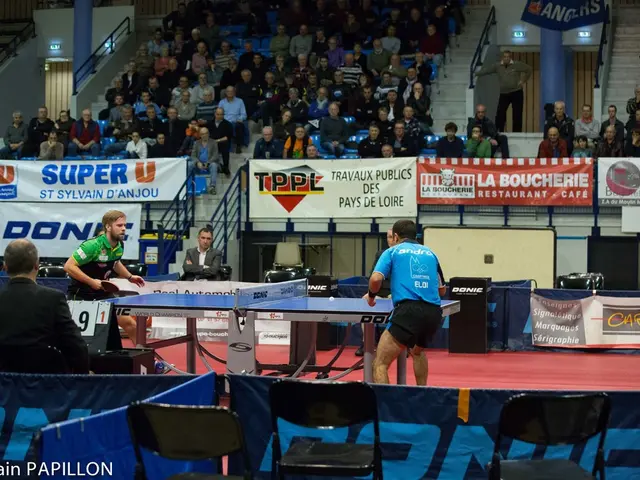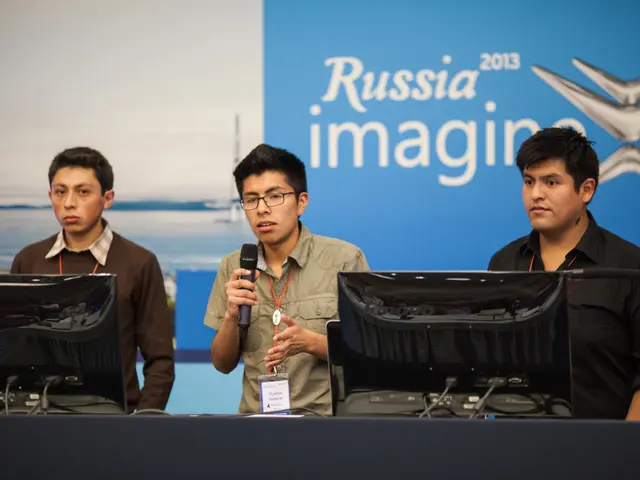Credit card users have been making purchases using their available credit
The unsecured consumer credit market in Russia has seen a significant shift in the first half of 2025, with credit cards accounting for approximately 80% of the market. This trend, according to industry experts, is a result of the rapid digitalization of the financial sector, macroprudential requirements from regulators, and economic disruptions.
The decline in loan issuance, particularly new credit applications, starting in the fall of 2024, can be attributed to a sharp drop in approval rates. Banks have been actively reducing limits on existing credit cards to avoid higher credit risks stemming from approvals made in different market conditions and with lower borrower indebtedness.
This optimization, as noted by various banks, has not been noticeable for the general client base. However, it has resulted in an increase in the net interest margin on credit cards for some institutions, such as MTS Bank, by 1.5 percentage points in the first quarter of 2025.
The popularity of credit cards has been increasing since the beginning of 2023, with the pace accelerating in the second half of 2024. The rise in their share, which did not exceed 60% prior to the fourth quarter of 2024, can be partly explained by the ease of access to credit products like credit cards due to lower barriers in the digitalized financial sector.
Various factors contribute to the popularity of credit cards. Loyalty programs, such as cashback and bonuses, are a significant draw, as noted by Magomed Gamzaev. The convenience of using credit cards multiple times without additional paperwork also plays a role, according to Gamzaev, director of financial product development at 'Sravni' macro-keeper.
The reduction in the key rate is expected to help satisfy pent-up demand for large purchases, according to Ivan Lonkin, head of client relations at SDM Bank. A significant growth in all segments of retail lending, including cash loans, is expected with a key rate reduction to 12-13%, as noted by Lonkin.
However, high interest rates have led some clients to use credit card limits to pay for current expenses during grace periods, while depositing their own funds on savings accounts or short-term deposits and earning interest, according to Egor Lopatin, director of the financial institutions rating group at the NCR agency.
Looking forward, the share of credit cards is expected to remain at 70-80% in the near future, according to Konstantin Borodulin, managing director of financial institutions ratings at NRA Rating Agency. This trend reflects a broader trend of fintech and credit card expansion in Russia during this period.
Despite the optimizations, banks are working to improve efficiency and margins by focusing on clients who use credit cards for current expenses but do not generate profit for the banks, as noted at a forum by a representative of MTS Bank. The share of clients affected by these optimizations is less than 5%, according to the banks.
The reduction in credit card lending was less noticeable relative to cash loans, partly due to the maintenance of large numbers of cards issued in previous years in banks' portfolios. However, the increase in the share of limit utilization on existing credit cards has been observed, with cards issued before the start of the tight monetary policy having lower rates.
In conclusion, the unsecured consumer credit market in Russia has undergone a significant transformation, with credit cards dominating the landscape. This shift, driven by a combination of factors, is expected to continue in the near future, shaping the landscape of retail lending in Russia.
Read also:
- Shaping India's Economic Progression: Readying the Financial System for Tomorrow
- Two farmers in Zambia take legal action against two firms with Chinese connections, alleging an ecological disaster caused by their operations.
- Deepening EU-India relations despite apprehensions regarding Moscow connections
- Ongoing Transition Towards Cleanliness







